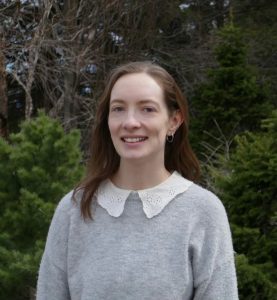Life-saving oxygen therapy administered to preterm infants often leads to a chronic lung disease called bronchopulmonary dysplasia (BPD). BPD is associated with abnormal neurodevelopment, such as motor and cognitive deficits, yet this association was previously not well understood. Marissa Lithopoulos, PhD student at the University of Ottawa, led a study that established a neonatal mouse model of hyperoxia-induced BPD. This was the first investigation to explore the long-term consequences on neural progenitor cells (NPCs, which are the cells that become neurons) and the surrounding blood vessels (the vascular niche), components crucial for neurodevelopment. Lithopoulos and colleagues found that neonatal hyperoxia exposure dysregulated vascular function and this was associated with significant long-term vascular remodeling. Further, they demonstrated that neonatal hyperoxia exposure led to a significant decline in the NPC population, NPC proliferation, and in neurogenesis in mice at postnatal day 14 and 1 year of age. The results found in mice were further confirmed utilizing NPCs from preterm neonatal baboons.
Marissa Lithopoulos won a CAN-CIHR-INMHA Brain Star award for these discoveries.
To better understand the mechanisms driving these deficits, the researchers conducted gene expression analysis of NPC niche brain regions. Neonatal hyperoxia exposure significantly altered the expression of genes crucial for new blood vessel growth (angiogenesis), vascular autoregulation, cell growth/genesis (proliferation), and new neuron formation (neurogenesis). These impairments correlated with motor and cognitive deficits in aging hyperoxia-exposed mice, similar to deficits observed in BPD patients.
The potential impact of this research is significant to preterm infants and their families, as well as to the fields of neuroscience, neonatology, and developmental biology. Sadly, preterm birth affects 15 million infants worldwide annually. This study may considerably influence neonatology practices to utilize oxygen therapy in a judicious manner to improve outcomes for infants affected by preterm birth worldwide. Furthermore, this study links BPD with abnormal neurodevelopment, by uncovering the role of NPCs and their vascular niche. It therefore fills key gaps in our knowledge and provides new cellular therapeutic targets to explore in future research. Moreover, Lithopoulos and colleagues identified molecular mechanisms that may contribute to hyperoxia-induced impairments. The mechanisms highlighted in this research, as well as data the research group has shared publicly, can stimulate additional research to further our understanding of hyperoxia-induced brain injury and lead to the development of potential therapies to aid this vulnerable patient population. This research also demonstrates that early perturbations in brain development during the postnatal period can have life-long consequences. And, finally, the clinically pertinent baboon model used in the study can be used in the future to better understand neurodevelopmental disorders at unique gestational timepoints.
About Dr. Marissa Lithopoulos
Dr. Marissa Lithopoulos’ passion for improving the lives of preterm infants stems from losing her brother to preterm birth complications. Dr. Lithopoulos conducted this research as a PhD student in the laboratory of Dr. Bernard Thébaud at the Ottawa Hospital Research Institute, after obtaining a Canadian Institutes of Health Research (CIHR) Frederick Banting and Charles Best Canada Graduate Scholarship. As the project team lead, she conceptualized and designed the experiments in this study and acquired most of the data. This was a highly collaborative study and several researchers contributed intellectually. In instances that required the expertise of others, Dr. Lithopoulos sought out local neuroscience experts: Drs. Baptiste Lacoste, Jing Wang, Diane Lagace, and Ruth Slack. For neonatal baboon experiments, Dr. Lithopoulos facilitated an international collaboration with world renowned scientists and acquired a CIHR Michael Smith Foreign Study Supplement, to conduct experiments at the University of Texas at San Antonio, which houses the only preterm baboon model in the world. With guidance from Drs. Steven Seidner, Shamimunisa Mustafa, Alvaro Moreira, and Cynthia Blanco, she became the first scientist to isolate NPCs from preterm neonatal baboons, which helped strengthen the clinical relevance of this study. Dr. Lithopoulos interpreted the data with assistance from her supervisor and collaborators and wrote the research publication. Dr. Lithopoulos received her PhD in June 2021 and is now a Postdoctoral Fellow at the Hospital for Sick Children and a Visiting Scientist at The University of British Columbia working with prominent world leaders in the field of stem cell biology, Dr. David Kaplan and Dr. Freda Miller. Dr. Lithopoulos is supported by a CIHR Fellowship and continues her research to understand and improve preterm birth outcomes.
Source of funding
This study was supported by CIHR, the Stem Cell Network, the Ontario Institute for Regenerative Medicine, the Children’s Hospital of Eastern Ontario Foundation, and Fundação de Amparo à Pesquisa do Estado de São Paulo #2021/12354-8, #2018/09125-4.
Scientific publication
Lithopoulos MA, Toussay X, Zhong S, Xu L, Mustafa SB, Ouellette J, Freitas-Andrade M, Comin CH, Bassam HA, Baker AN, Sun Y, Wakem M, Moreira AG, Blanco CL, Vadivel A, Tsilfidis C, Seidner SR, Slack RS, Lagace DC, Wang J, Lacoste B, Thébaud B. Neonatal hyperoxia in mice triggers long-term cognitive deficits via impairments in cerebrovascular function and neurogenesis. Journal of Clinical Investigation. 2022;132(22):e146095.



